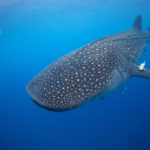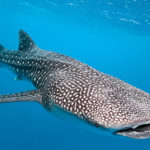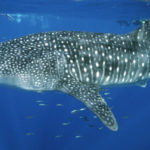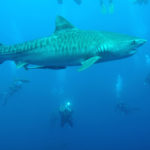Sharks
 Sharks belong to the family of cartilaginous fishes. The difference between cartilaginous fishes and bony fishes is that the cartilage skeleton is lighter and more flexible.
Sharks belong to the family of cartilaginous fishes. The difference between cartilaginous fishes and bony fishes is that the cartilage skeleton is lighter and more flexible.
Sharks breathe through a number of gill slits, 5-7 gill slits are located on both sides of their body. All sharks have several rows of teeth. They lose their teeth on a regular basis, but new teeth continue to grow and replace lost ones.
When the shark dies, the salt of the sea water completely dissolves its skeleton, leaving only the teeth.
Shark Skin “consists of a series of scales that act as an external framework for easy movement in water. The upper side of the shark, as a rule, is dark to mingle with water, it is not visible from above. And the lower part of them is white, it harmonizes with the lighter surface of the sea from below. This helps the sharks disguise themselves.
Sharks have a very sharp sense of smell, are able to detect blood in the water at a distance of several miles. The eyes of sharks have an amazingly wide view, cover almost 360 degrees. Their panoramic view of the underwater world is hampered by only two blind spots, one in front of the muzzle, and the other directly behind the head.
Sharks are adapted to life in a wide range of different temperatures of the aquatic environment.
Some species live in shallow, coastal areas, other species live in deep waters, at the bottom of the ocean, others live on the surface in the open ocean. The shark-house lives along external continental shelves and underwater ridges. Their homes are too deep for people, so we know almost nothing about them.
Some species, for example, bovine sharks, are able to live in salt and fresh water. Most sharks are active in the evening and at night – this is the time of their hunting. Sharks are able to migrate over long distances – on a scale can overcome whole ocean basins. There are species of sharks single, and there are social – preferring to live in groups.



























